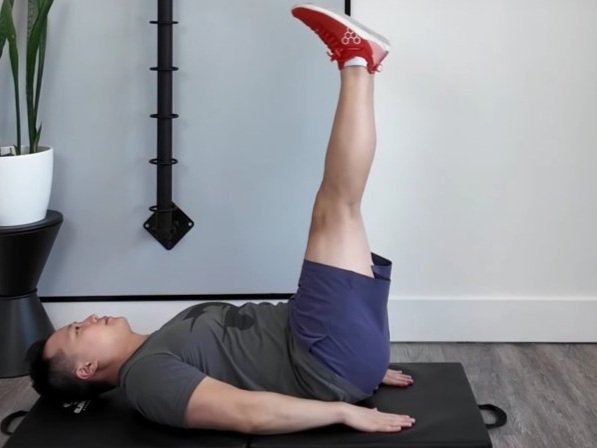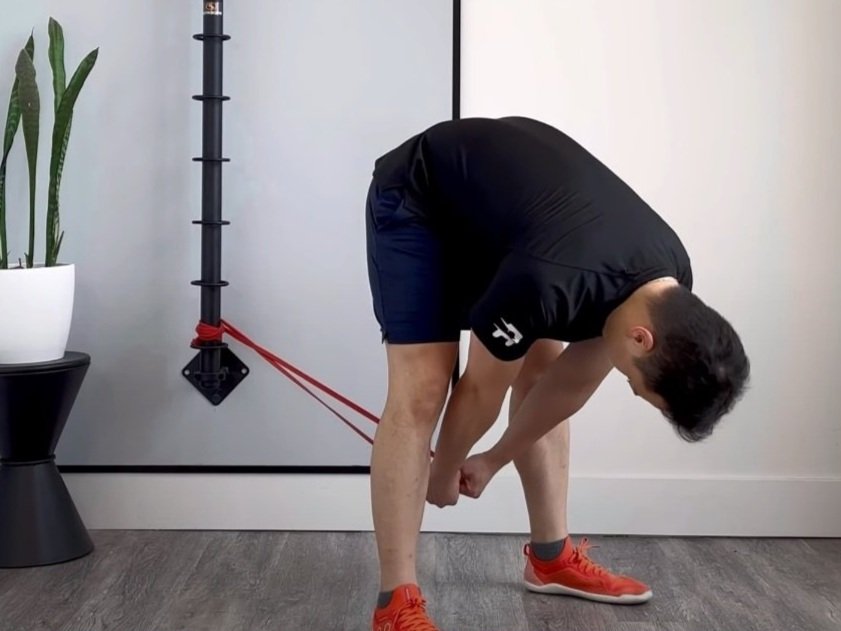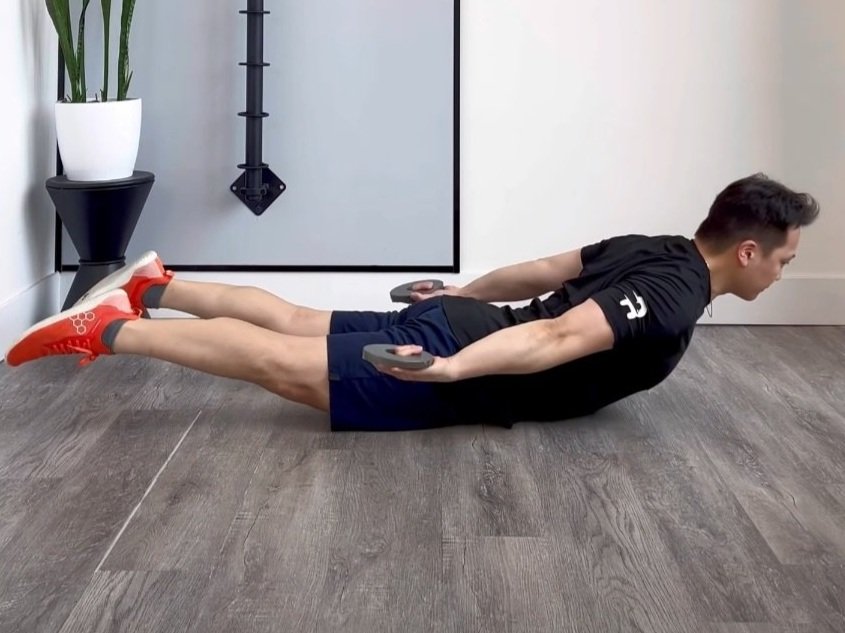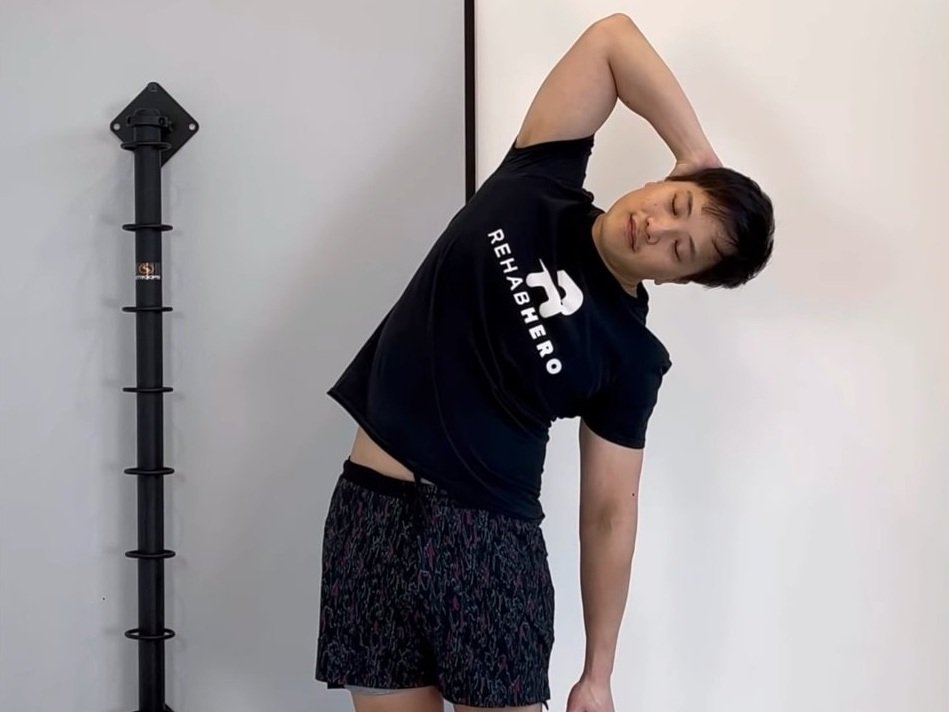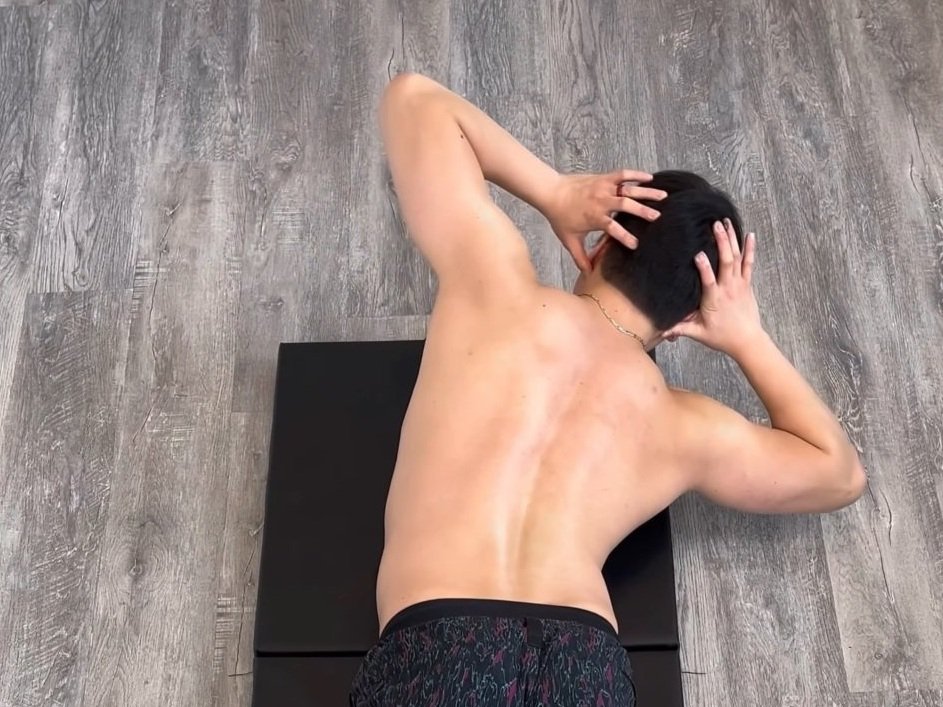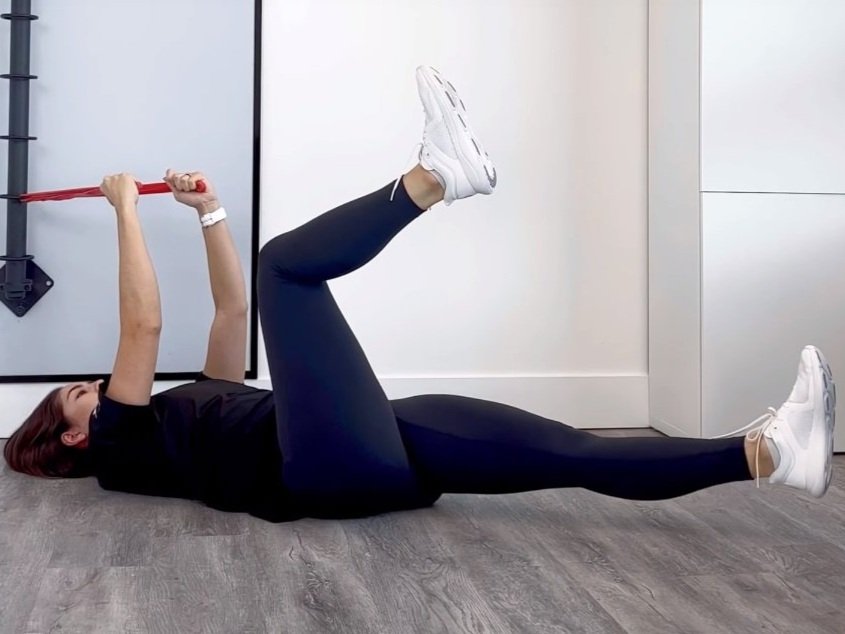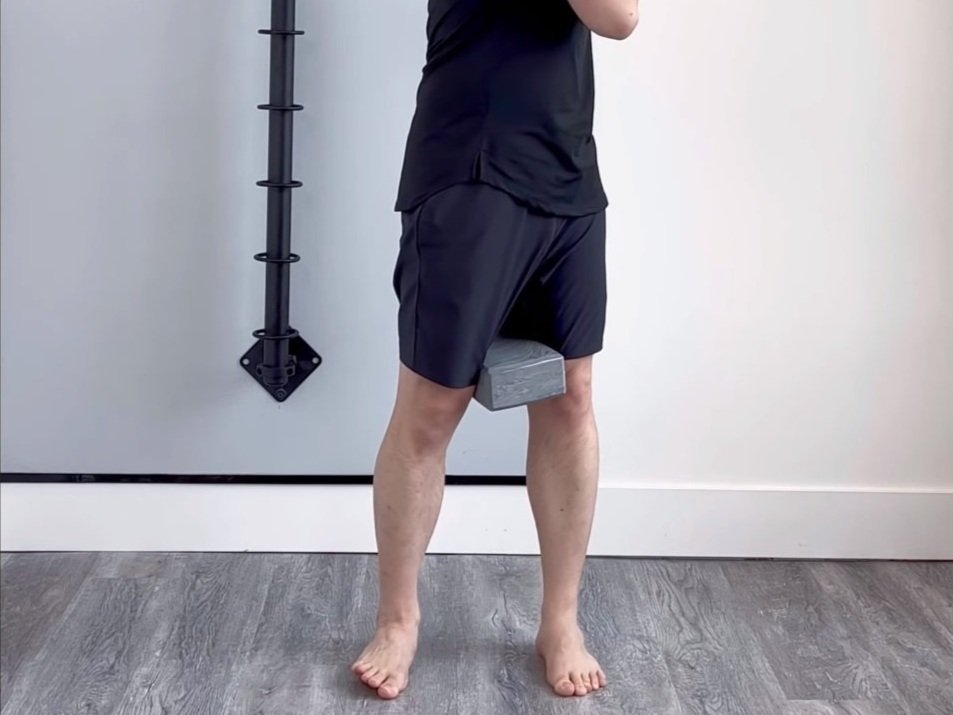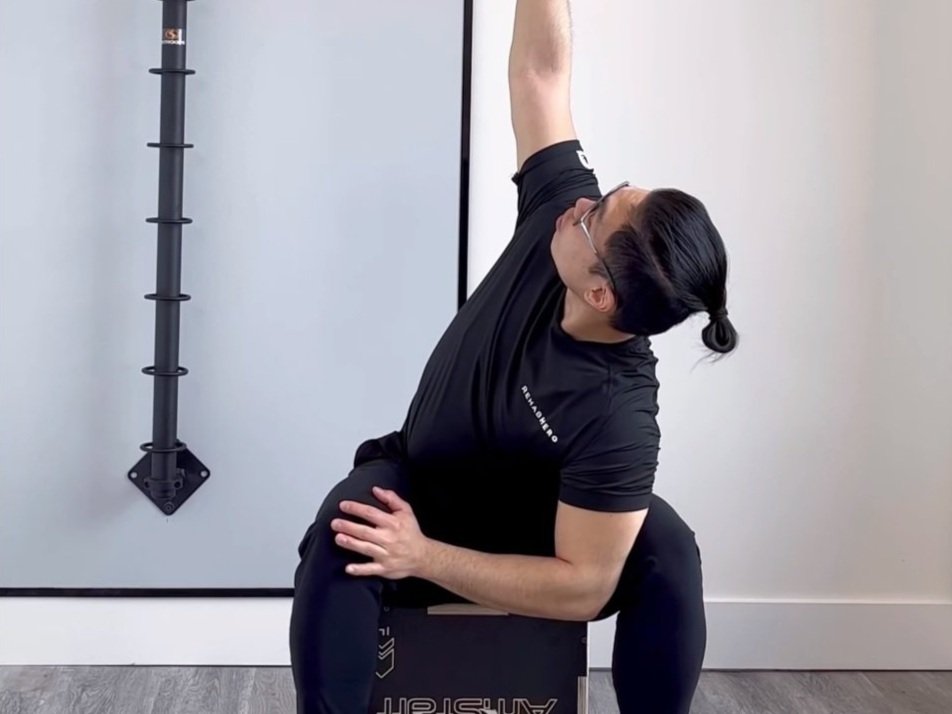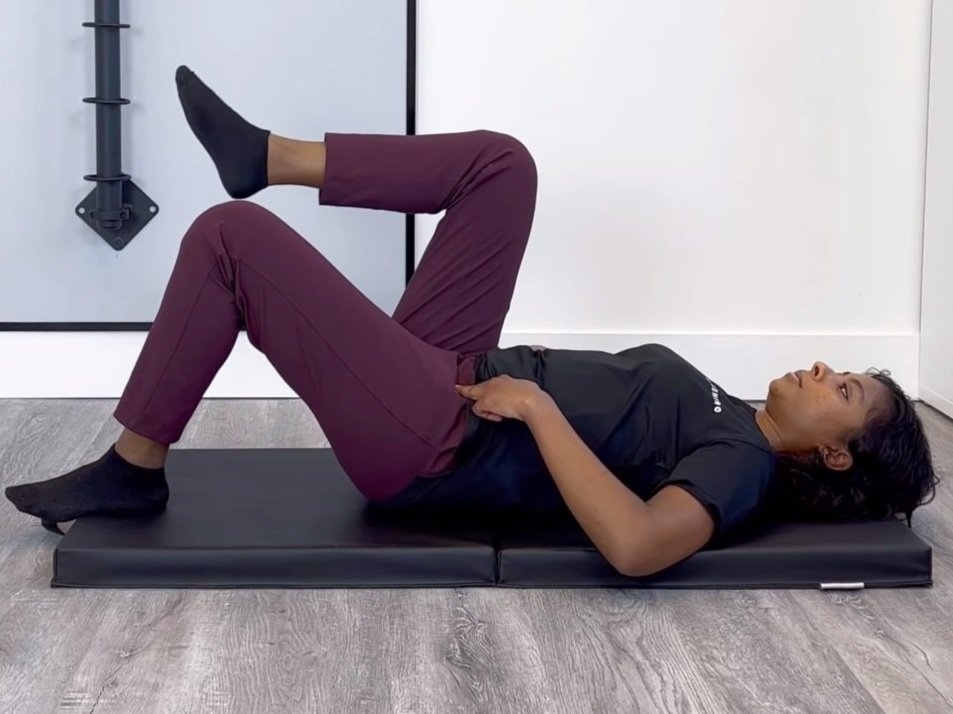Lumbar Spondylolisthesis
How Serious Is Lumbar Spondylolisthesis?
Learn about this condition and how you can manage symptoms
What is Lumbar Spondylolisthesis?
By definition, it is the relative forward movement of a vertebral body in relation to the vertebral body right below it. In medical terms, it is the anterolisthesis (or anterior movement) of one vertebra relative to next segment below.
This translation can lead to pain experienced in the low back, thigh, leg, or buttock. Pain is typically increased in movements that require lumbar extension. An example of a lumbar extension based movement is the Cobra Pose in yoga. This pain is relieved with activities that require lumbar flexion. An example of a lumbar flexion activity is bending down to touch your toes from a standing position. Other symptoms such as muscular atrophy, reflex changes and muscular weakness has been noted in about 30% of patients with this condition.
There are typically two types of spondylolisthesis. A spondylolysis spondylolisthesis is a fatigue fracture that occurs through the pars interarticularis of the vertebra. This most commonly occurs during childhood when first learning to walk, or when starting off an extension based sport such as gymnastics at a young age. The other type is much rarer and is called a spondyloptosis spondylolisthesis. This type occurs when there is a complete slippage of the vertebra.
Moreover, there are 4 grades of spondylolisthesis. These grades are determined by radiographic imaging and is based on the amount of anterolisthesis is observed on your x-rays:
Grade 1: The vertebrae has an anterolisthesis of 0-25%
Grade 2: The vertebrae has an anterolisthesis of 25-50%
Grade 3: The vertebrae has an anterolisthesis of 50-75%
Grade 4: The vertebrae has an anterolisthesis of 75-100%
Spondyloptosis: The vertebrae has an anterolisthesis of over 100%
It should be noted that there is no correlation between the grade of spondylolisthesis and pain experienced. However, if you are curious you can consult your medical doctor or your chiropractor for a referral for x-ray imaging in order to assess the grade of your spondylolisthesis. You can book in with a Rehab Hero chiropractor using the follow button:
What is the most common cause of spondylolisthesis?
There are many types of spondylolisthesis with the most common being isthmic (young age related as mentioned above) or degenerative (occurring with old age). There are 5 types and they are:
Type 1 Dysplastic: This type occurs as a congenital defect in the neural arch or sacrum
Type 2 Isthmic: This type most commonly occurs as a stress fracture in the pars. This can also occurs as an acute fracture of the pars. It may also present without fracture (as elongated pars)
Type 3 Degenerative: This occurs as degenerative arthrosis in older age
Type 4 Traumatic: This occurs as a fracture in the neural arch (not in the pars)
Type 5 Pathologic: This occurs as a pathological fracture. Pathological fractures are fractures secondary to an underlying disease such as METS or Paget’s Disease.
What are the risk factors for spondylolisthesis?
Spondylolisthesis has been shown to have demographic links to certain populations. By age, both young and elderly populations have highest incidence rates of being diagnosed with this condition since both the isthmic and degenerative types occur within those age groups. Additionally its been shown that females are more affected by males, and that there may be a genetic link.
Activities may also lead to this condition, particularly ones that require repetitive flexion and extension of the lumbar spine. Activities such as gymnastics, rowing and deadlifts have been correlated with spondylolisthesis.
How do you fix spondylolisthesis?
Since spondylolisthesis is a forward shift of the vertebrae as a result of a fracture in the pars, correction of this could only occur with surgery. However, since there is no correlation between the amount of anterolisthesis and pain intensity or disability, surgery may not be required to resolve symptoms. Instead, conservative treatments can be used to decrease pain and disability. Conservative treatments may include modalities for pain management such as acupuncture, electro acupuncture, and soft tissue therapy. Conservative treatments will also include exercise rehabilitation for maintaining long term pain relief.
What should you not due with spondylolisthesis?
While experiencing acute pain or symptoms it is recommended to avoid lumbar extension for prolonged periods of time. This is because it may promote a forward shift of the affect lumbar vertebrae relative to the adjacent segments. However, one pain has been lowered to tolerable levels reintroducing lumbar extension will be important to maintain full function.
Is walking bad for spondylolisthesis?
Contrary to popular belief, complete rest is generally not recommended for those who have symptomatic spondylolisthesis. Physical activity has been shown to improve symptoms and decrease pain in those with this condition. Maintaining cardiorespiratory health in low impact activities such as walking, stationary cycling or swimming will be important during the recovery process.
How should I sleep with spondylolisthesis?
Since going into lumbar hyperextension is a position that may aggravate symptoms, positions such as sleeping on your belly may also aggravate your symptoms. Alternative sleeping positions that may be tolerable include side sleeping or sleeping on your back with a pillow placed under your knees. These positions promote lumbar flexion which is a position of relief.
Which doctor treats spondylolisthesis?
You can consult your sports physiotherapist or chiropractor directly for the treatment of spondylolisthesis. Both clinicians will be able to provide modalities for pain relief and exercises for lumbar stability. Adjunct therapies such as osteopathy or massage therapy will be helpful for providing additional pain relief in both the short and long term.
The general goal of treatment is to de-load the lumbar discs and facet joints while also increasing space in the spinal canal. Massage therapy may be used to address local hypertonic muscles that may be in myospasm. Joint mobilization or manipulation by certified physiotherapists and chiropractors directly on the segment above and below of the spondylolisthesis can help to improve biomechanics and reduce stress on unstable segments.
To book in with a Rehab Hero clinician click the button below:
How do you stabilize spondylolisthesis?
Lumbar stability exercises such as core endurance based exercises can help with the stabilization of the spondylolisthesis. Exercises that also promote good motor control and motor patterning will help with de-loading the lumbar spine. These exercises will focus on dissociating hip movements from the lumbar spine, and the thoracic spine from the lumbar spine (thoracolumbar dissociation).
Which exercises are good for spondylolisthesis?
Depending on your current pain and fitness levels different exercise may be more beneficial to you compared to others. For best result consult your local physiotherapist or chiropractor for prescribed exercises.
Core endurance exercises such as the Bear Crawl Hold exercise is generally a good place to start with spondylolisthesis. The hip flexion positioning used is helpful for preventing the lumbar spine from hyperextending which will be important for avoiding re-aggravation of symptoms.
Start by going on your hands and knees, with your feet supported by your toes. The hands and knees should be placed directly below the shoulders and hips respectively. From here slightly lift the knees off of the floor and hold while maintaining a neutral spine.
In addition to core endurance exercises, inclusion of hip spine dissociation exercises can provide additional relief by reducing compensational movement patterns. An example of an entry level exercise is the Bird Dog exercise.
The goal is to keep the spine and pelvis as neutral as possible while moving your arm and thigh. Start by going on your hands and knees, and have them placed directly below the shoulder and hip joints. Brace your core to maintain a neutral spine and slowly stretch out your hand and foot. Imagine elongating your body as much as possible, pushing forward with your fingertips and backwards through the heel. Do this without dropping the pelvis or hyperextending the spine.
In the same vein, inclusion of thoracolumbar dissociative exercises will be helping in decreasing lumbar spine reliance during activities of daily living. An example of a thoracolumbar dissociative exercise is the Thoracic Cat Cow exercise.
Start in a quadruped position (hands and knees) and focus on isolating to the upper and mid spine. Place both hands palms flat on the floor just below your shoulders. Alternate between flexing and extending your mid and upper back while minimizing movement occurring in the lumbar spine.
For a complete exercise program you can consult one of our Rehab Hero therapists by clicking the button below:
Written By:
Dr. David Song, Chiropractor, Rehab Coach
















